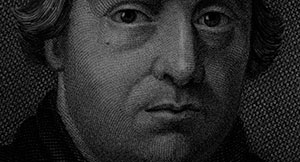Thu 27 Feb 2014
Remembering George Herbert
Posted by Mathew Block under Literature, Main, Poetry
No Comments
 On this day—February 27—our Anglican friends remember the George Herbert. Let us join with them in doing so.
On this day—February 27—our Anglican friends remember the George Herbert. Let us join with them in doing so.
Prayer: O Lord, we remember with thanks this day your servant George Herbert, priest and poet. May his writings, which speak beautifully and deeply of Your grace, be for us a source of comfort, and a strengthening of faith also for all who believe the Gospel. In the name of Jesus Christ—Herbert’s Lord and our Lord—we pray. Amen.
THE AGONIE
Philosophers have measur’d mountains,
Fathom’d the depths of seas, of states, of kings,
Walk’d with a staffe to heav’n, and traced fountains:
But there are two vast, spacious things,
The which to measure it doth more behove,
Yet few there are that found them; Sinne and Love.Who would know Sinne, let him repair
Unto mount Olivet; there shall he see
A man so wrung with pains, that all his hair,
His skinne, his garments bloudie be.
Sinne is that presse and vice, which forceth pain
To hunt his cruell food through ev’ry vein.Who knows not Love, let him assay
And taste that juice, which on the crosse a pike
Did set again abroach; then let him say
If ever he did taste the like.
Love is that liquor sweet and most divine,
Which my God feels as bloud; but I, as wine.– George Herbert
———————
 My latest at First Things went up a few days ago (February 18), to coincide with the anniversary of Luther’s death. Since then, it’s been picked up by
My latest at First Things went up a few days ago (February 18), to coincide with the anniversary of Luther’s death. Since then, it’s been picked up by 
 But the thing I noticed first was the darkness. During my first few weeks of work, I would leave the office to find the sun had already set. By the time I made it home, the sky would be completely dark.
But the thing I noticed first was the darkness. During my first few weeks of work, I would leave the office to find the sun had already set. By the time I made it home, the sky would be completely dark.

